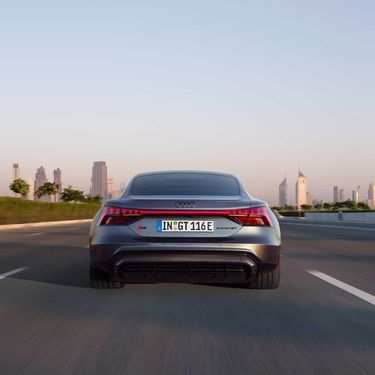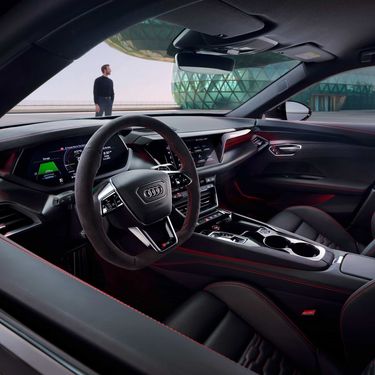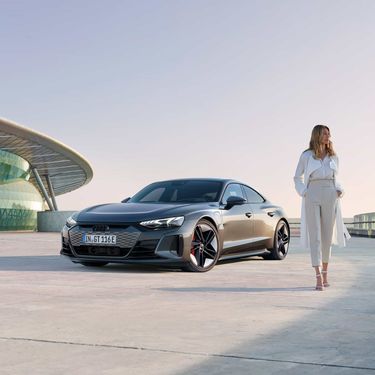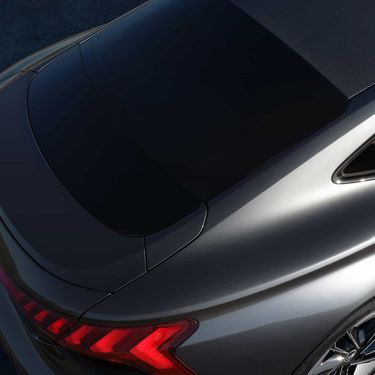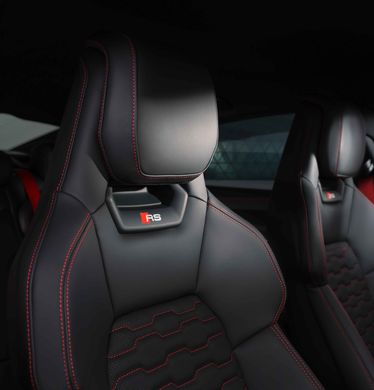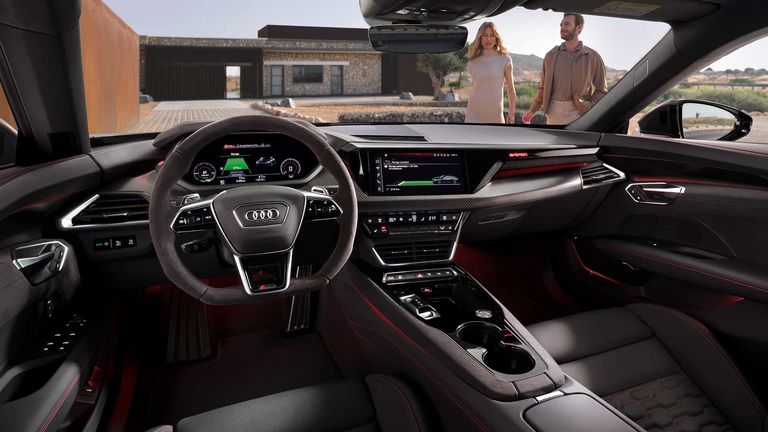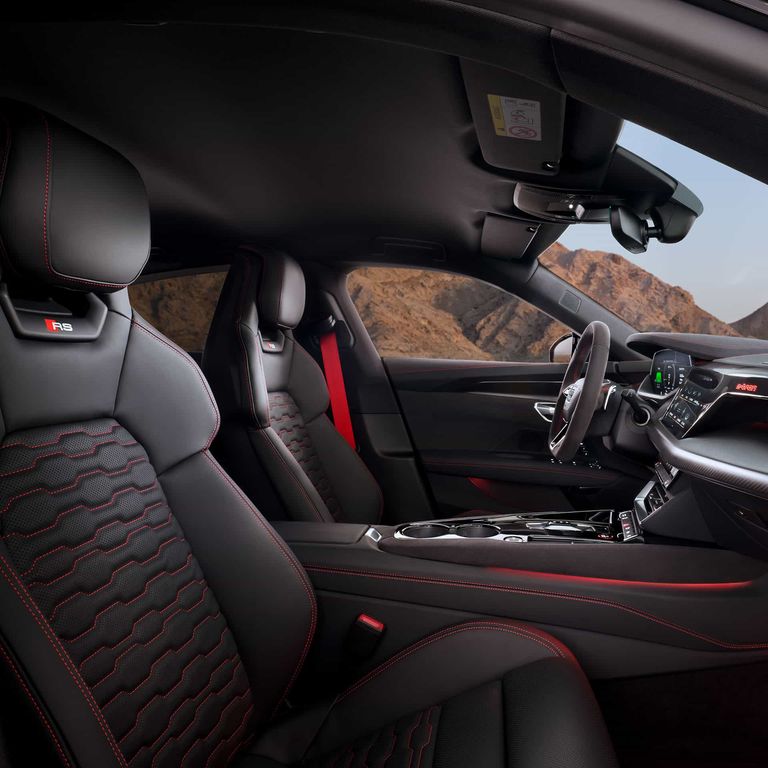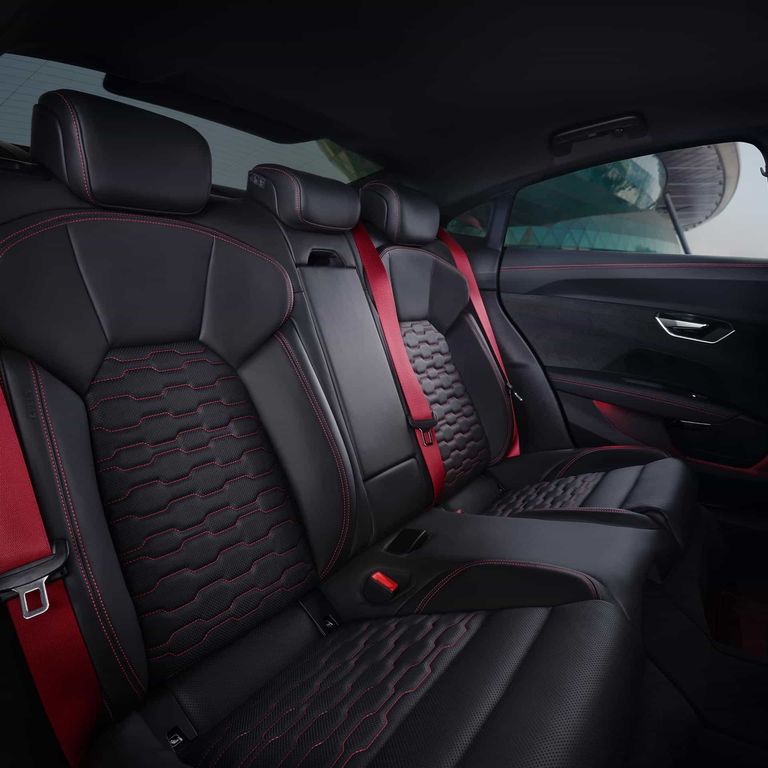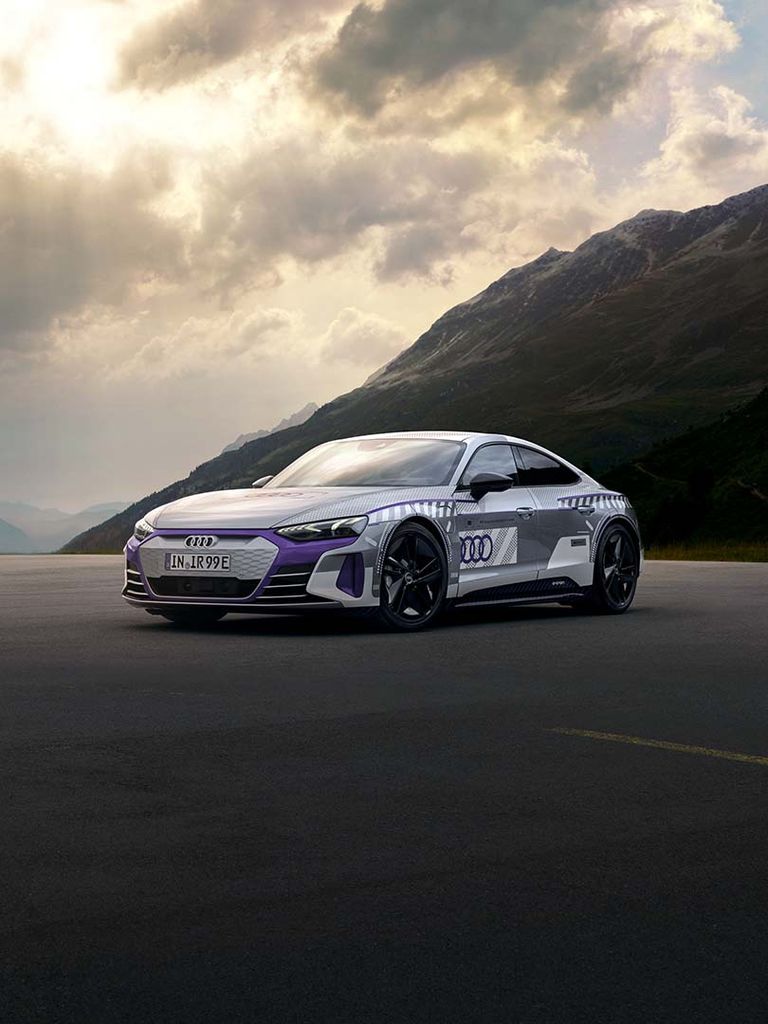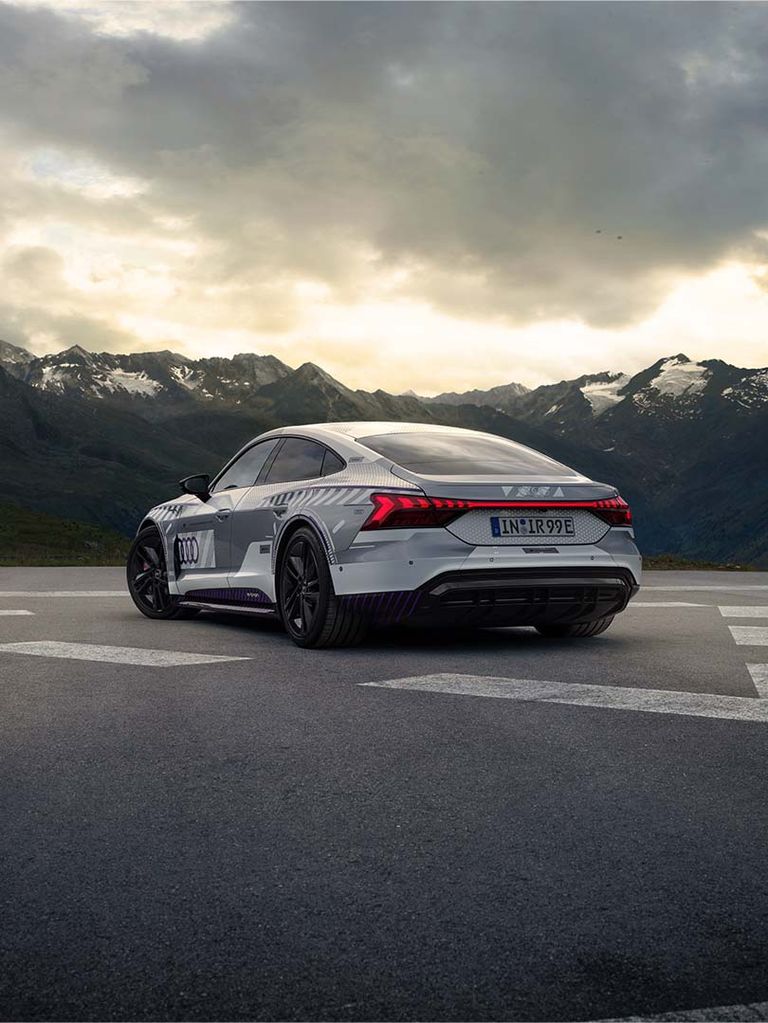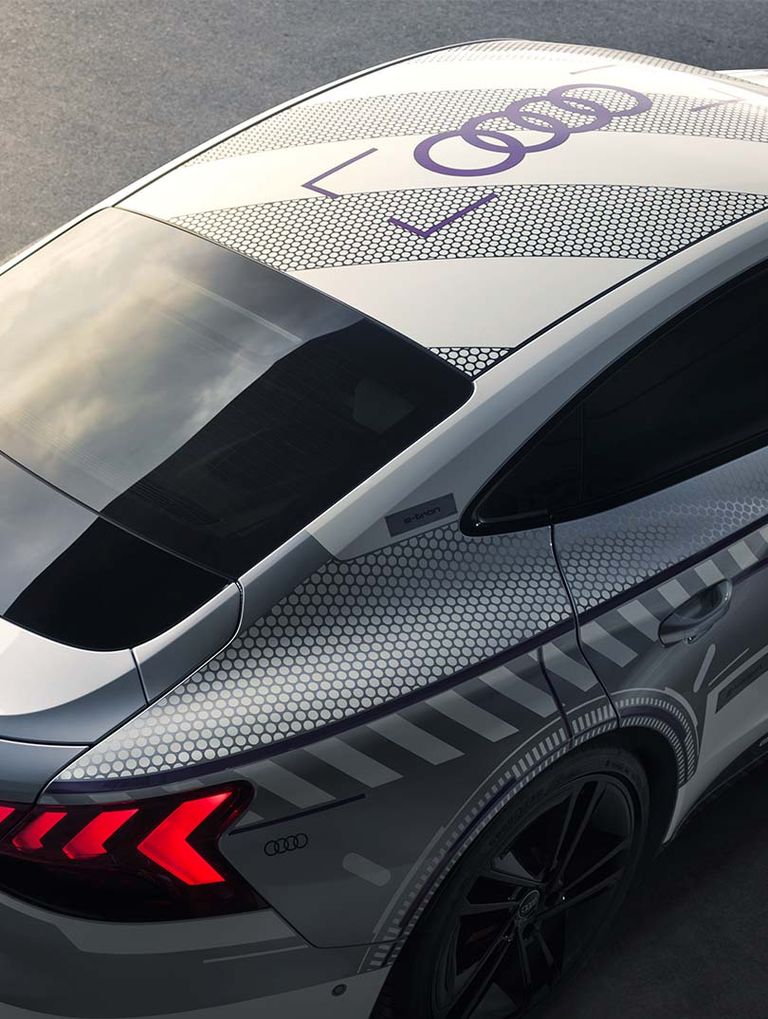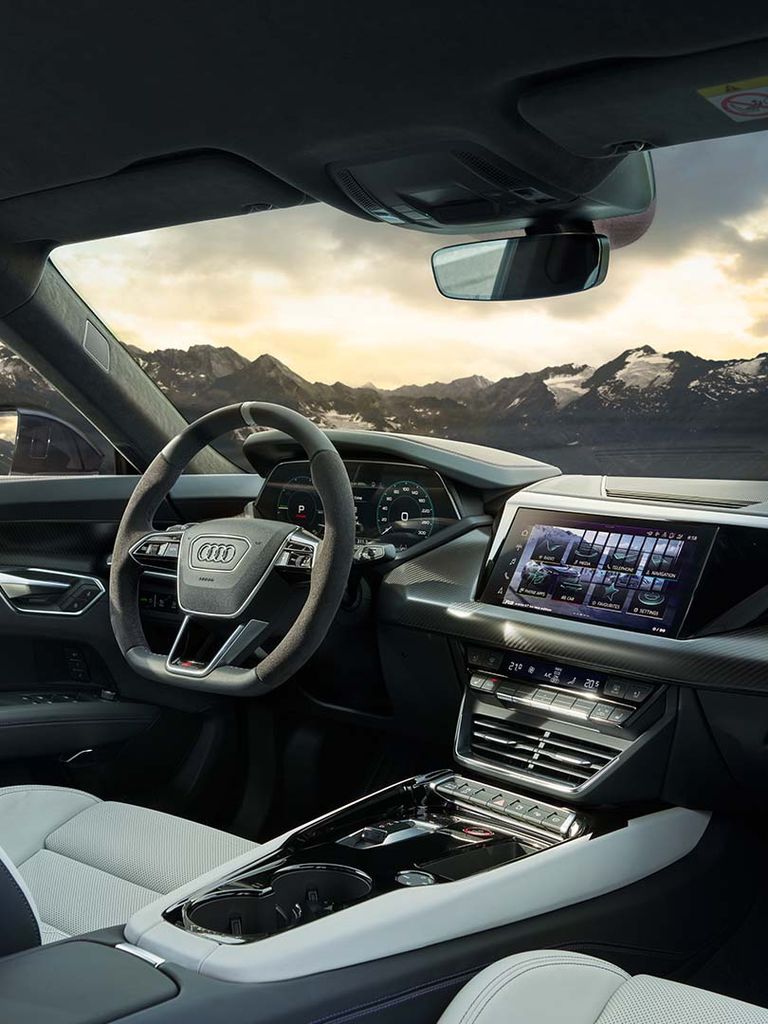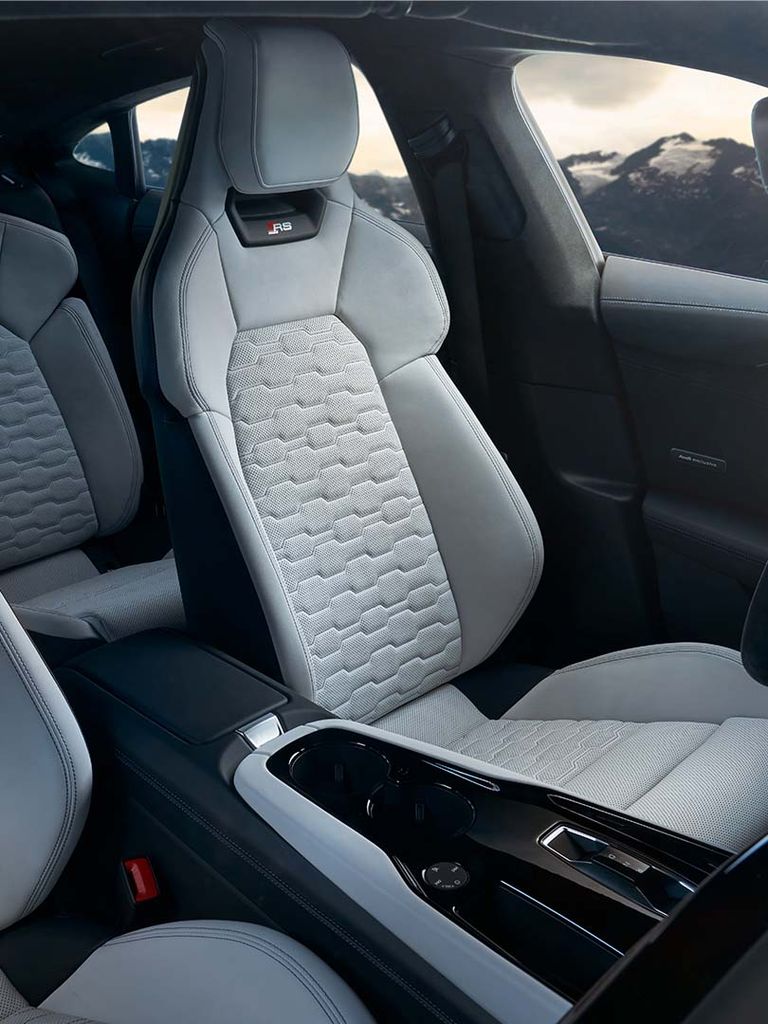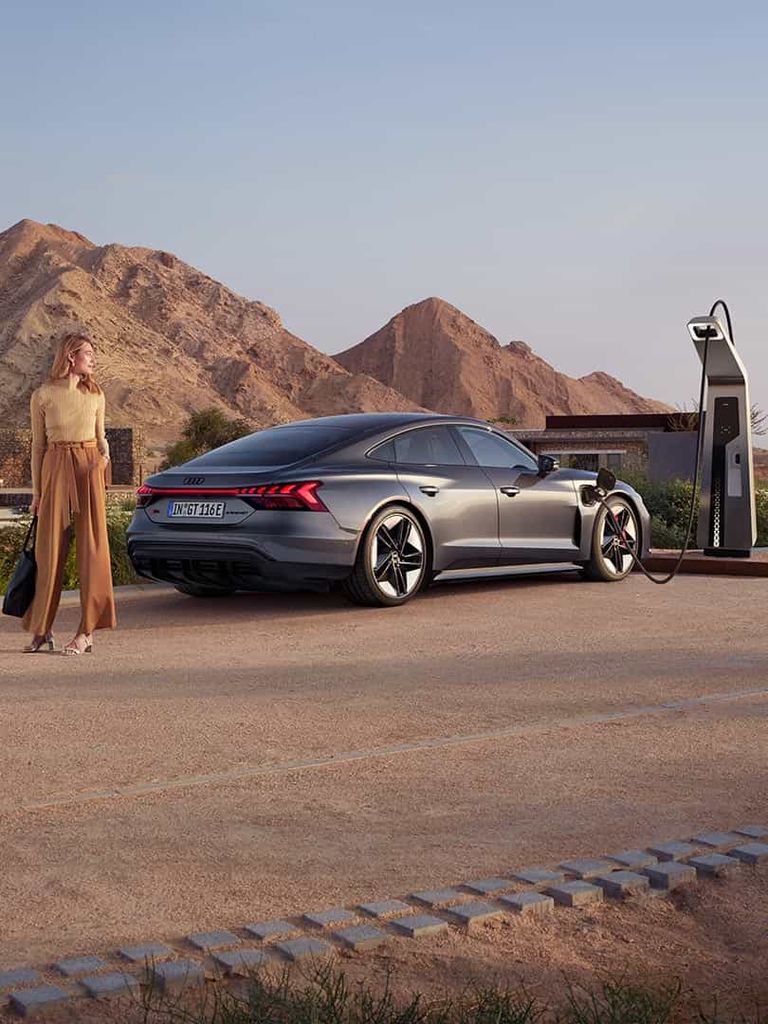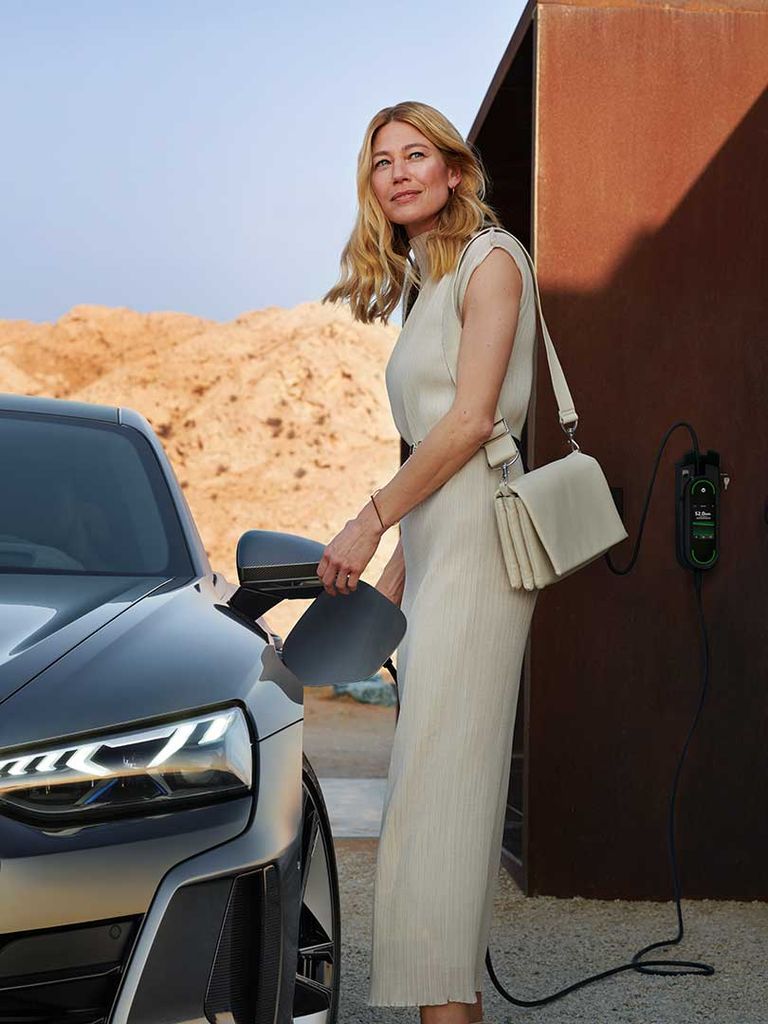Audi RS e-tron GT: the emotional electric coupé | Audi.de
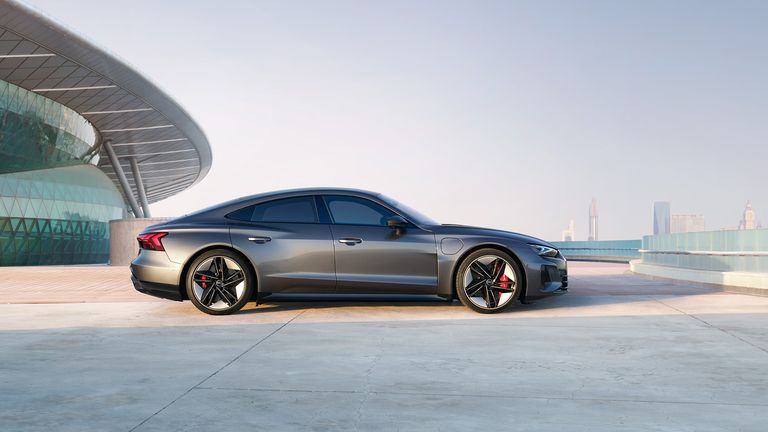
RS e-tron GT
CO2-Emissionen{ft_nemo-fn_eec-global-disclaimer}: 0–0 g/km
Stromverbrauch (kombiniert){ft_nemo-fn_eec-global-disclaimer}: 3.0–3.0 miles/kWh
Maximum electrical power up to
440
kW
Total electrical torque: 830 Nm
Acceleration (0-100 km/h) up to
3.3
s
Range (WLTP) up to
495
km
Electric. Among other wonderful things
Exterior design
The ambition – to reinterpret a car – is also reflected in the purist design, which is inspired by aerodynamic performance. Progressive luxury provides the impetus to further intensify a driving experience brimming with emotion. Characteristic: RS emblems with the red rhombus.
The RS design package, grey also underscores the pronounced elegance and the progressive design of the vehicle interior through a combination of high-quality interior materials and contrasting stitching in steel grey.
Personal, not normal
Eye-catching effect: the ambient lighting package plus⁹ automatically adjusts the colour mood to suit the motif.
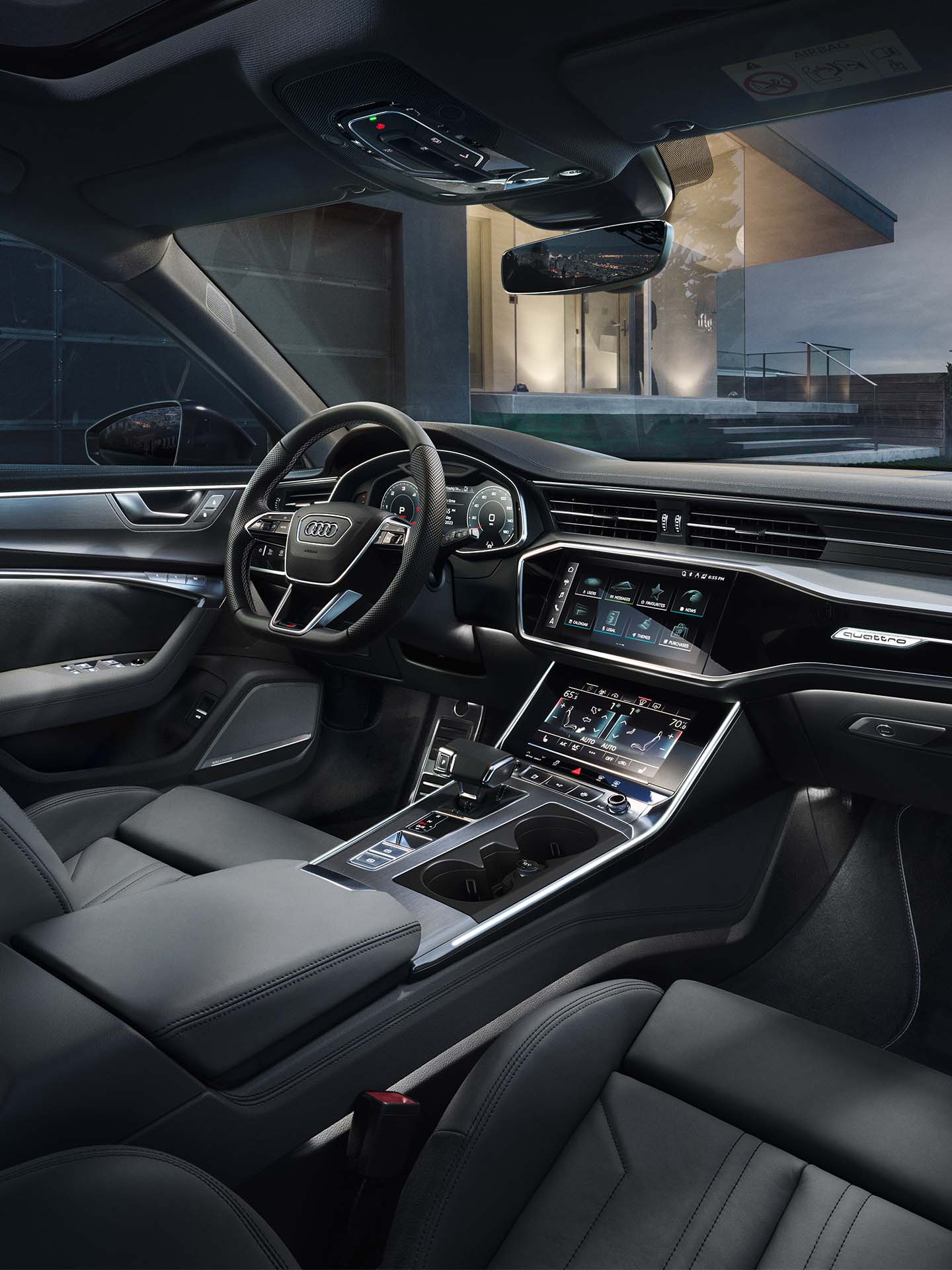
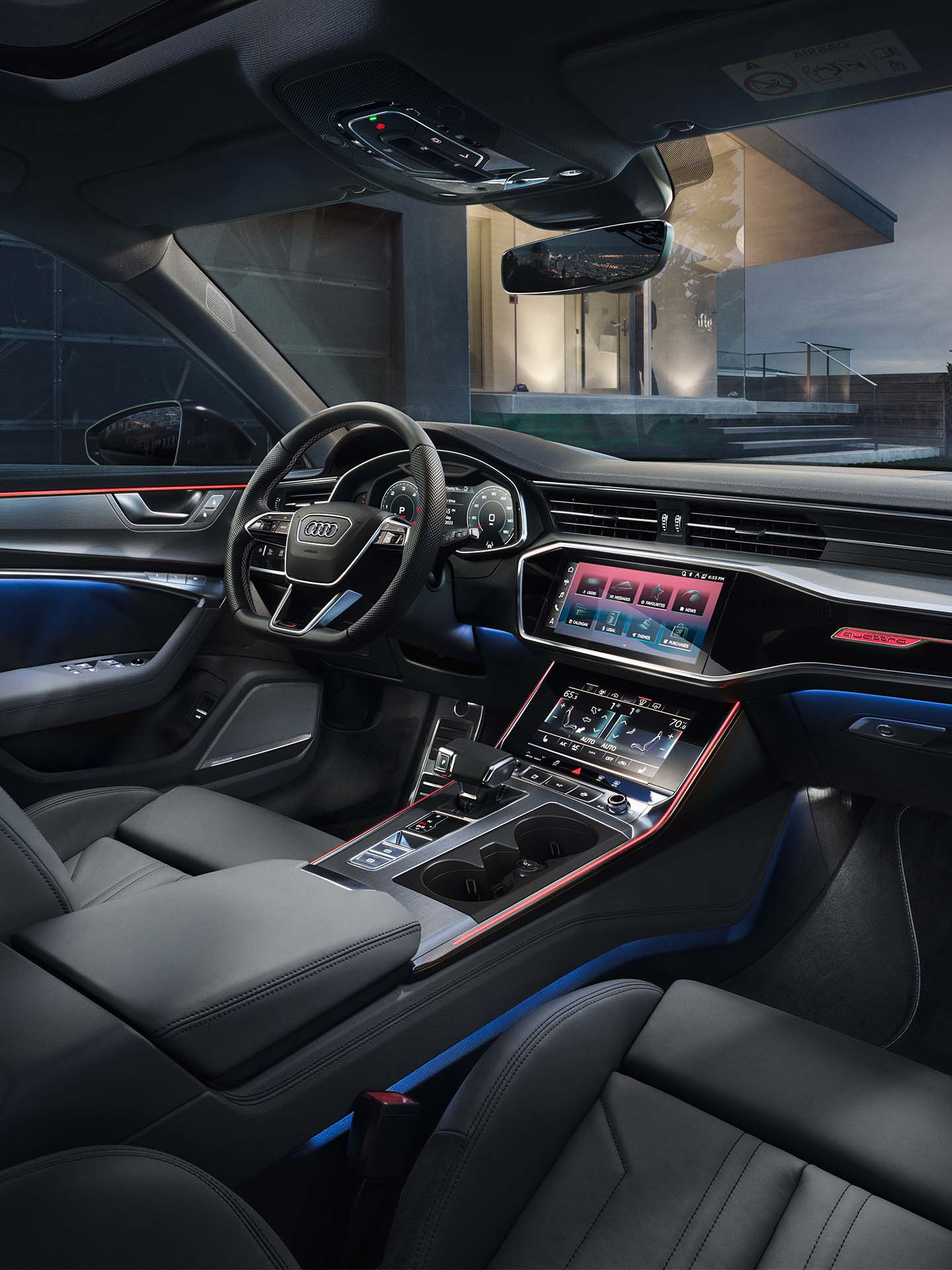
Note: The image is from the Audi A6 Avant. Background in the MMI: © Thomas Hoepker - Magnum Photos
Born in the snow. Perfected by Audi exclusive
The RS e-tron GT ice race edition embodies ice-cool design and glowing passion. The fully electric sports car is inspired by the GP Ice Race held in Zell am See and impresses in every season. The special edition, limited to 99 units across Europe, is brought to the road by Audi exclusive.
Charged from 5% to 80% in approx.
22.5
min
(at maximum DC charging power of up to 270 kW and under ideal conditions)
Charging system
800
volt
Maximum charging power up to 270 kW
Battery capacity (net) up to
83.7
kWh
Combined power consumption in kWh/100 km: 22.1–19.8; Combined CO₂ emissions in g/km: 0. Only consumption and emission values according to WLTP and not according to NEDC are available for the vehicle.
Charging at home and on the road
The 800-volt lithium-ion battery integrated flat into the underbody offers extremely high performance – both when charging and when driving. In conjunction with the recuperation system, a range of up to 472 km was calculated according to the WLTP measuring procedure (Power consumption combined: 22.1–19.8 l/100 km (WLTP); CO₂ emissions combined: 0 g/km (WLTP). Only consumption and emission values according to WLTP and not according to NEDC are available for the vehicle).
Driving dynamics
The power that the Audi RS e-tron GT offers with the fully electric quattro all-wheel drive is impressive. A motor on the front axle and one at the rear deliver up to 440 kW of power (Power consumption combined: 22.1–19.8 l/100 km (WLTP); CO₂ emissions combined: 0 g/km (WLTP). Only consumption and emission values according to WLTP and not according to NEDC are available for the vehicle).
RS e-tron GT: Combined power consumption in kWh/100 km: 22.1–19.8; Combined CO₂ emissions in g/km: 0. Information on fuel/power consumption and CO₂ emissions with ranges depending on the selected equipment of the vehicle. Only consumption and emission values according to WLTP and not according to NEDC are available for the vehicle.
Due to physical constraints, the maximum output for the acceleration figures given can be repeated multiple but not an unlimited number of times in a row.
The charging time of the battery can vary depending on a number of factors including ambient temperature, the use of other country-specific connectors and use of the preconditioning function (e.g. remote-controlled air conditioning of the vehicle). When using domestic connectors, the e-tron charging system limits charging capacity.
For AC charging, Audi recommends charging the high-voltage battery at industrial power sockets, at charging stations or at a wall box. This is more efficient and considerably quicker than charging at a domestic power socket. The vehicle should not be regularly charged at domestic power sockets using the mobile e-tron charging system (compact and connect) if there is access to an industrial power socket with alternating current (AC) or a public AC or DC charging station. Charging capacity depends on the type of mains connector used, the country’s voltage and the number of available phases of the power network as well as the customer’s own domestic installation. It may therefore be lower in some cases.
The equipment mentioned is an option available for an extra charge.
The Audi RS e-tron GT ice race concept is a modified Audi RS e-tron GT without road registration that is not for sale.
